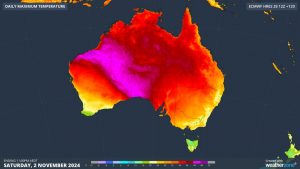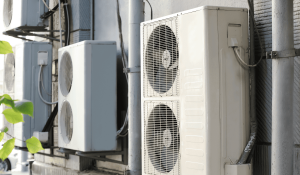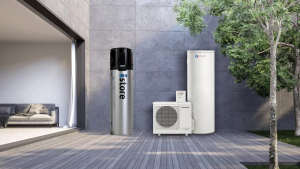If you’re in the market for a new air conditioner, or even a repair or service to your existing one, you may have found yourself scratching your head while wondering if the sales person was speaking a foreign language.
Like most technical industries, the world of air conditioning has developed its own unique language. But never fear, because we’re here to break it down for you, by providing our stress-free translator for those entering the world of home cooling and heating in Melbourne and Geelong.
Below, you’ll find a comprehensive guide to all the words and terminology you may encounter, to help you navigate this world like a boss. It’s well-worth bookmarking for later use, so you can refer back to it when you need it.
Glossary of words and terminology in the air conditioning industry
Air filter. Your air filter is a crucial part of your air conditioning unit, because it traps contaminants, debris and dust that would otherwise clog your indoor unit. They are made from polyester fibre or a plastic resin-based net.
Air purifier. Some air conditioners are fitted with an air purifier that removes allergens, bacteria, pollutants and bad smells from your home – and are sought after by those living with allergies, asthma, or compromised immunity.
ARC. All of our technicians are licenced by the Australian Refrigeration Council, which is responsible for granting refrigeration handling licenses to approved technicians in Australia. This is to keep you, and the environment, safe.
Controller. These digital devices provide easy control of your air conditioning thermostat at your fingertips, all from an easy-to-navigate screen.
Commissioning. When your air conditioner is installed, this is the final step in the process. Our technician will test every component in the system to make sure everything complies with technical codes and manufacturer standards. Once commissioning is done, you can use your new system.
Duct. This is the silver tube that carries air from a central fan coil to various areas of a house. They are usually round, but can also be rectangular in shape, and are made from fibreglass, vinyl and metal.
Ducted system. This means your air is sourced from a central location (an internal fan coil in the roof space) and is delivered through a series of ducts strategically placed throughout your home. This allows you to discretely cool or heat different living spaces in your home (zoning) with the only visible components being the return air grilles, discharge grilles and controller.
Heating/cooling capacity. The higher the capacity (from about 2kW up to 9kW), the greater the heating/cooling coverage.
HVAC. This is an acronym for Heating, Ventilation and Air Conditioning. Heating, ventilation, and air conditioning is the use of various technologies to control the temperature, humidity and purity of the air in an enclosed space. Its goal is to provide thermal comfort and acceptable indoor air quality.
Hydronic system. This is a type of heating and cooling system that uses ‘liquid heat transfer’ – in other words, heating up water and moving it through pipes installed under the floor.
Indoor Unit. This refers to the part of your air conditioning system that sits within your home – and provides all that delightful ‘conditioned’ air to you. It houses the heat exchange coil, filters, remote signal receiver and fan.
Inverter technology. Just like the accelerator on a car, your inverter gently increases and decreases power when needed. Inverter systems deliver an ideal temperature quicker and more steadily – meaning your comfort and running costs are optimised.
Multi-split system. This refers to one outdoor unit, services by multiple indoor units positioned in different rooms. These can function independently or together, depending on your needs.
Outdoor Unit. This is the part of an air conditioning system that contains the compressor, propeller fan, circuit board and heat exchange coil. It’s situated outside, and pumps refrigerant to and from its companion indoor unit. You’ll often hear this unit referred to as the ‘condenser’ or ‘heat exchanger’.
R-32. A successor to the R-410A refrigerant, R-32 is also non-ozone depleting and has 66% lower global warming potential (GWP) than R-410A.
R410A. A non-ozone depleting refrigerant that transfers heat energy between the indoor and outdoor units of the air conditioning system.
Split System. This popular air conditioning system is ‘split’ into two units – with one part inside and the other outside. These are relatively cheap and easy to install because no ducting is required. They are also energy efficient.
Thermostat. This is what controls the temperature inside your home. Most thermostats consist of a sensor that monitors air temperature, and relays this information to the air conditioning unit – enabling it to effectively heat or cool the space.
Zoning. This is a method of heating or cooling different areas (or rooms) within one house independently – usually by using separate controls, or by opening and closing dampers within ducts in each zone.
Call Plum Trade Services today
We’ve built our reputation on our Plum name and motto: that we will always do a plum job!
As a family owned and operated company driven by strong values, we recognise that customers of other companies can have a frustrating experience before, during and after air conditioning and heating installations, or when requiring service/repairs. It’s why y we’ll always put your needs first, treating you like family.
So, for a seamless, respectful, and expert-led comprehensive quote, or to book a service or repair diagnosis of your existing system, please call our award-winning support team on (03) 8360-9622 in Melbourne, or on (03) 5292 2219 in Geelong.
You’ll be in the safest hands, guaranteed.










